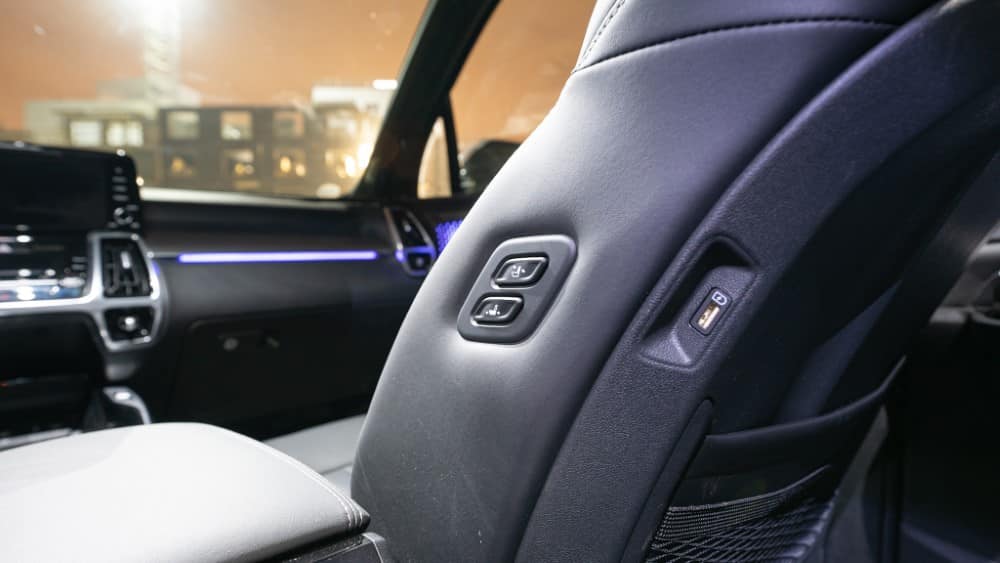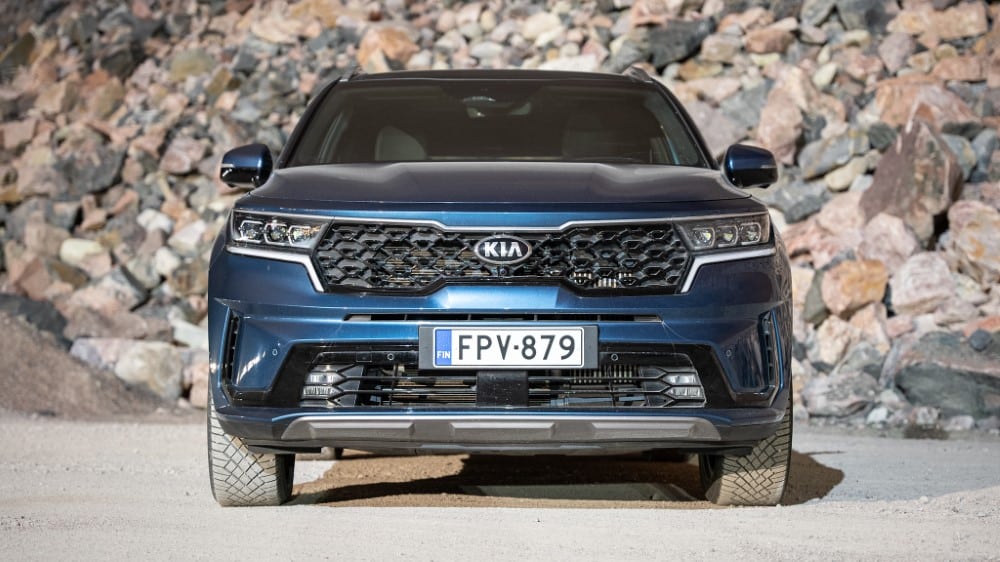Now in its fourth generation, the new Kia Sorento is an impressive, and especially bulky, revelation from Korea. The car exudes a Yankee feel.
In addition to its looks, the car has roomy seating for up to seven people, a design that puts practicality first, no skimping on standard equipment and even a third row of seats with air conditioning controls and usb charging sockets.

Electric motor to reduce fuel consumption
Electrification of cars has been the hottest topic in the automotive world in 2020. The Sorento has kept up with the trend, now offering three power train options. In addition to the test-driven hybrid, a charging hybrid and a conventional diesel are available.
The 1.6 T-GDI Hybrid AT means that the powertrain consists of a 1.6-litre four-cylinder petrol engine and a 44.2 kW electric motor combined with a 6-speed automatic transmission.
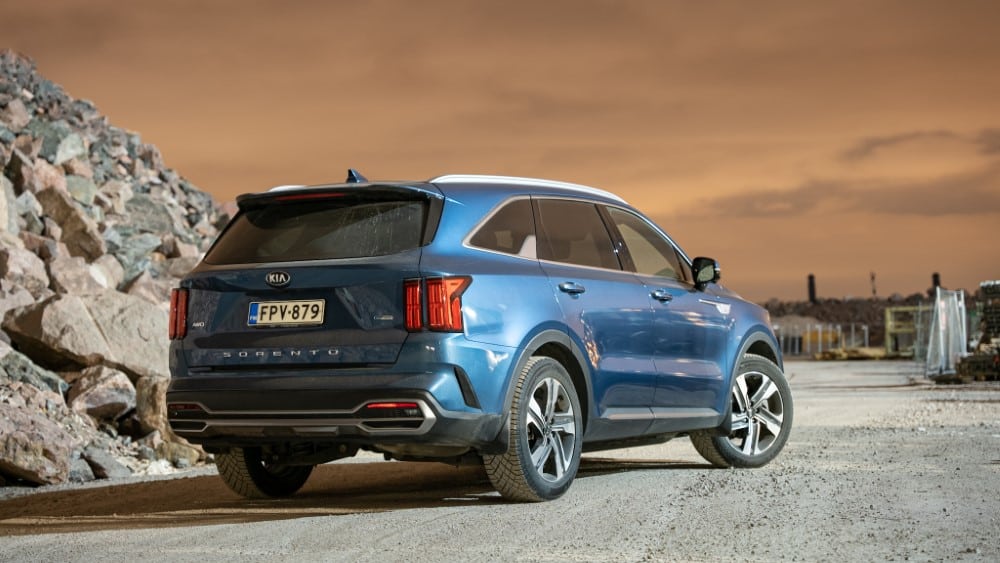
The electric motor works unobtrusively, mainly when starting off, and brings savings in the form of reduced fuel consumption. In the test drive, the average consumption was around eight litres in urban driving.
The electric motor is powered by a 1.49 kWh battery, and unlike the charging hybrid, the test car cannot be charged.
The car manages battery charging while driving mainly by recovering braking energy, and the battery charge level remained well around halfway throughout the test drive. The hybrid model is available in front- or four-wheel drive.
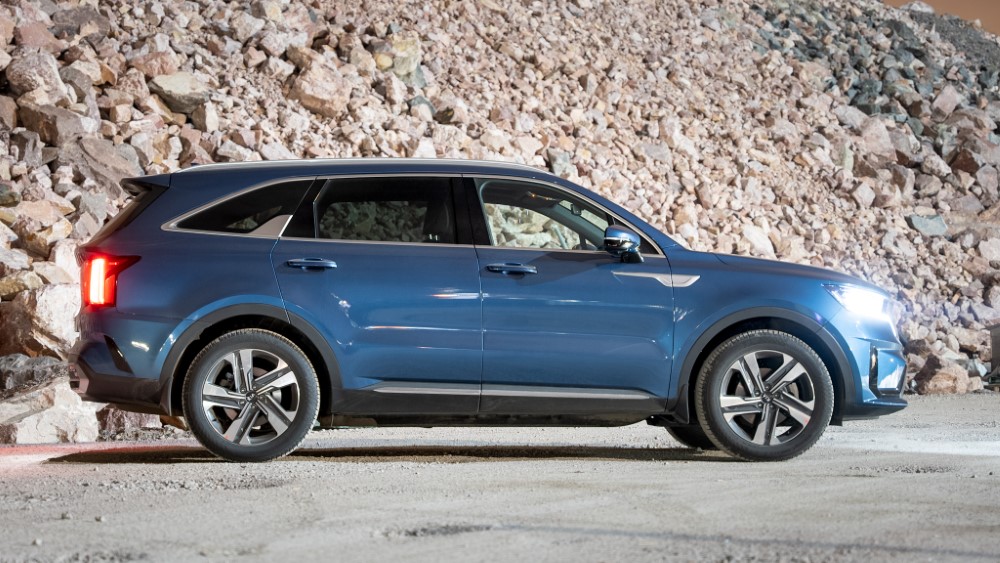
The hybrid system has a combined output of 230 horsepower, and although the bulky four-wheel drive has a curb weight of almost 2000 kg, the car feels quicker than the four-cylinder engine. Zero to 60 is achieved in 9.0 seconds.
In the charging hybrid, the electric motor has an output of 66.9 kW and is powered by a 13.8 kWh battery. The total power output of the system is 265 horsepower. If you’re looking for a workhorse, it may be worthwhile to go for the diesel variant, which produces almost 100 Nm more torque and increases the maximum towing capacity by almost 1,000 kg to two and a half tonnes.
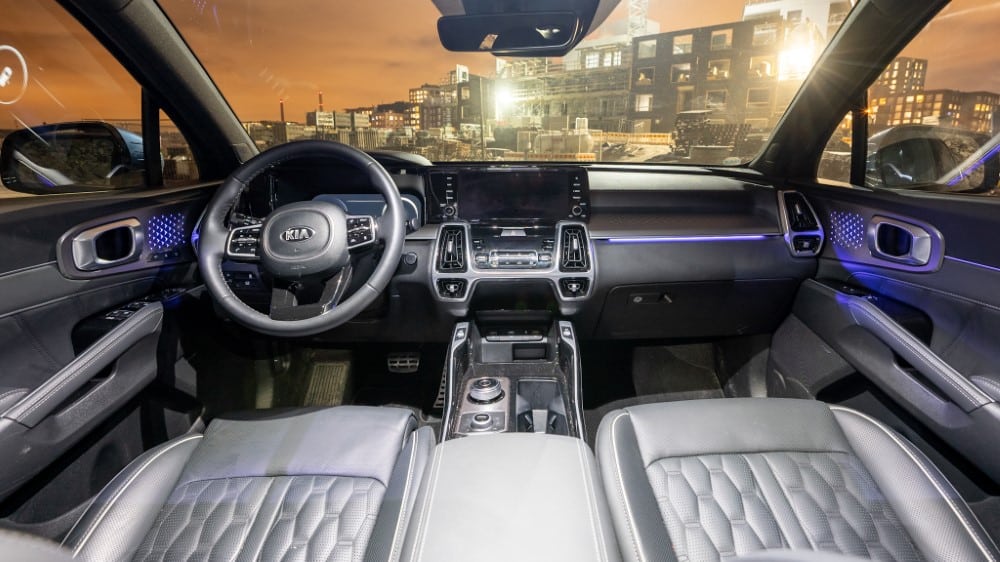
For the cottage road or off-road
The Sorento is not a full-blooded off-roader, but Kia offers the possibility to optimise the automatic and auxiliary systems by selecting different off-road driving modes. The choice of off-road modes (Snow, Mud and Sand) is only available on four-wheel drive models.
The Sorento handles poorly maintained cottage roads and off-road stretches with ease, but it’s not worth trying to take the car too deep into the woods.
The choice of off-road modes is easily made from the centre console dial. The same switch also allows you to change the basic driving modes (Eco, Sport, Smart), the main effect of which is felt mainly in the steering sensitivity and throttle response.
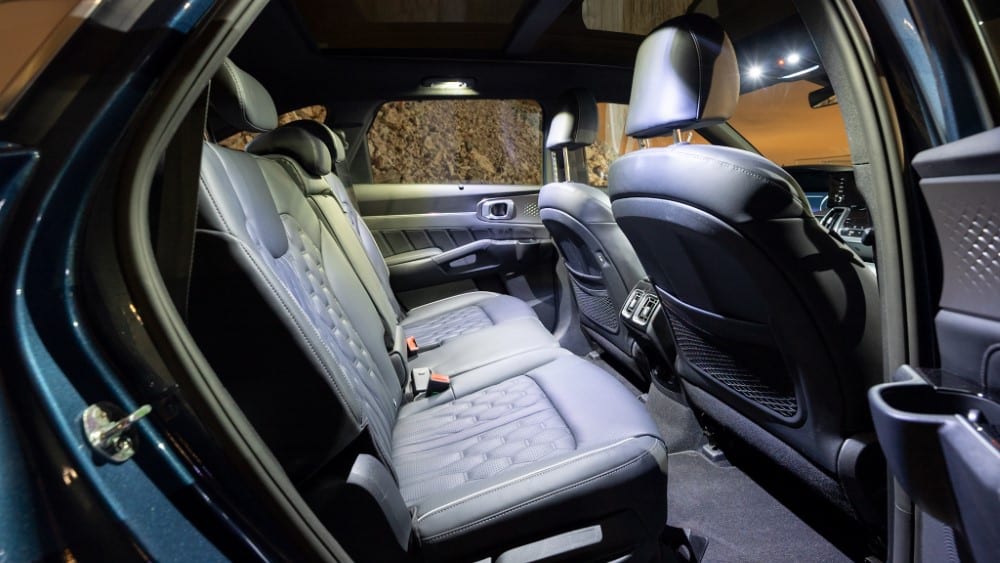
Comfortable on the road
The Sorento’s overall length of 4.8 metres is noticeable when driving, and the test car’s almost 2,000 kg curb weight makes for a stable ride. There’s plenty of power on offer, but the chassis does its job better in terms of driveability. The rigidity of the chassis brings the ride closer to sportiness than numbness.
The sound of the four-cylinder engine carries into the cabin at higher accelerations. The steering could do with more feel, but the new Sorento’s steering is by no means bad – again, given the car’s size and mass.
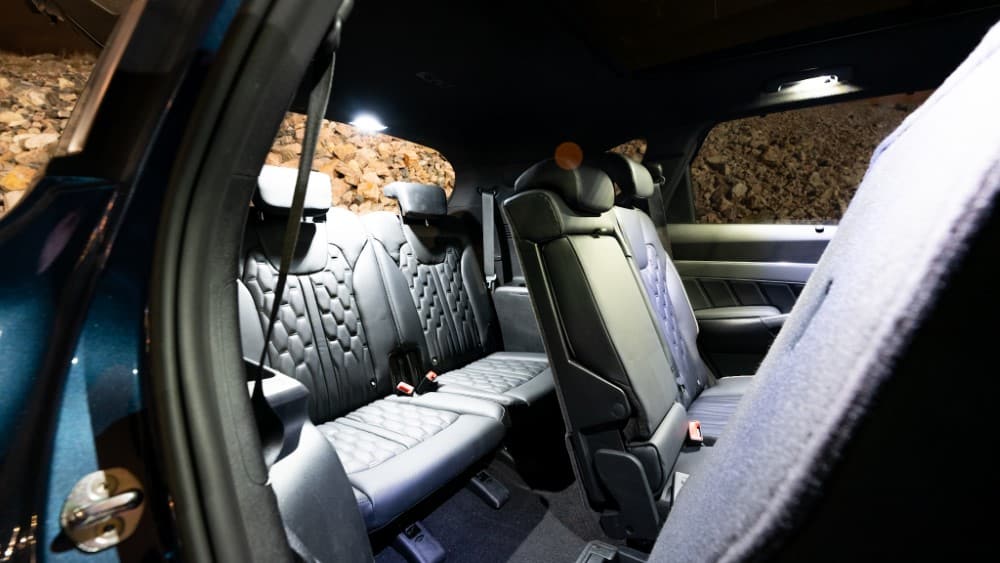
The car’s size is most noticeable in the new, unnecessarily small parking garages, where in the tight spaces the mirrors always seem to touch the entrance booms. The parking sensors and reversing camera that come as standard on all Sorento models will therefore be put to good use. A 360 camera, available as an option and included with the Business Luxury trim level, is available to help you perceive corners.
The test car also has an interesting feature that displays a camera image of the blind spot on the instrument panel when using the turn signal. In addition to the blind spot indication in the mirror, the camera is a good addition for perceiving the traffic around you. It is particularly useful for detecting cyclists. On the downside, the camera can get dirty quickly with a throat lozenge.
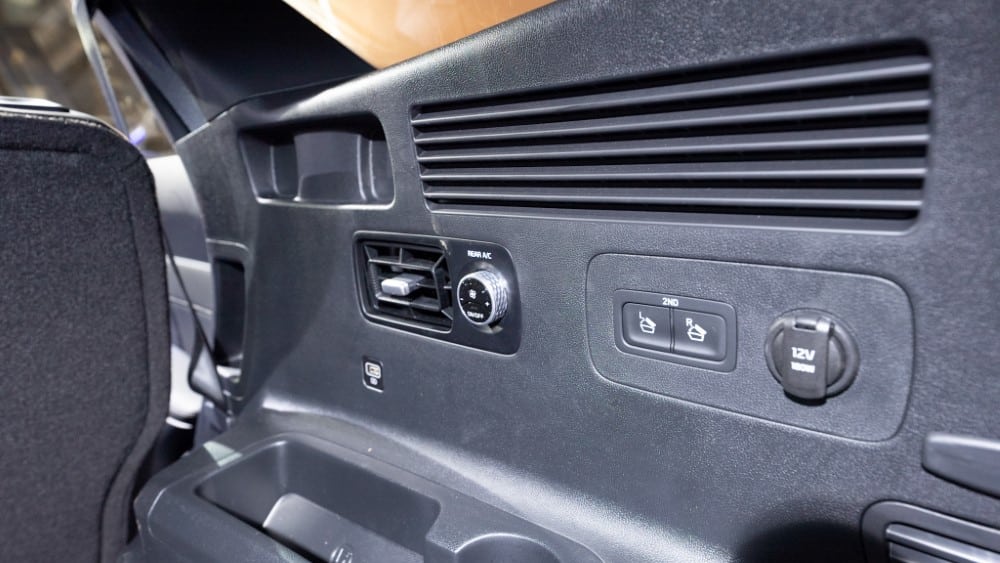
Technology, equipment and space
The test car was the best equipped Business Luxury model. As standard, the model comes with almost all the equipment available on the car, from air-conditioned leather seats to a windscreen display.
All powertrain and equipment level options are available in 5 or 7-seat versions. Third-row occupants will have to get used to slightly smaller legroom, but extra comfort is provided by dedicated usb charging sockets in the rear row and temperature controls for the air conditioning.
The second and third row seats can be easily folded down from the boot. the 5-seater Sorento offers a whopping 700-900 litres of boot space, depending on the powerplant, and more than two cubic metres of space when the seats are folded down.
in the 7-seater test-drive model, the boot space is around 600-800 litres with the third row of seats folded down. With all seven seats occupied, boot space is just under 200 litres.
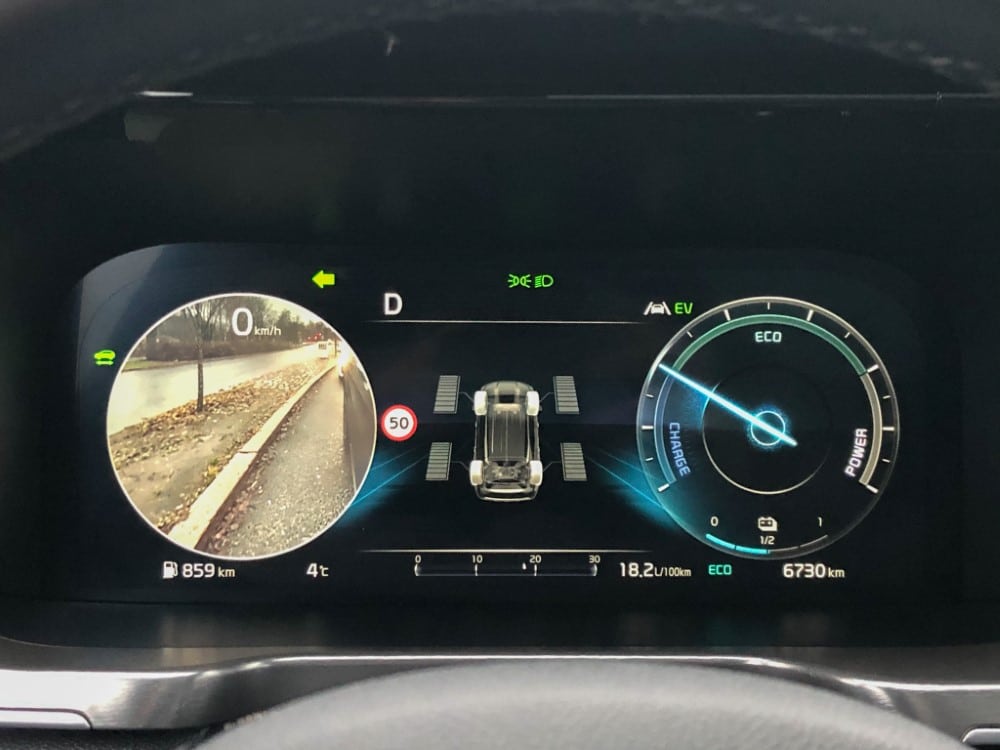
Kia Sorento 1,6 T-GDI Hybrid AWD Business Luxury AT 7-paik.
- Engine: 1598 cm³, 4-cylinder, petrol
- Combustion engine power: 180 hp. / 132 kW. @ 5500 rpm.
- Combustion engine torque: 265 Nm. @ 1500-4500 rpm.
- Electric motor power: 44.2 kW.
- Electric motor torque: 264 Nm.
- Total maximum power: 169 kW, 230 hp.
- Maximum total torque: 350 Nm.
- Acceleration: 9.0 sec (0-100 km/h)
- Combined consumption: 6.8-7.5 l/100km.
- CO₂ emissions: 155-170 g/km.
- Test consumption: 8.1 l/100km.
- Curb weight: 1847-2006 kg.
- Drive mode: four-wheel drive
- Boot space: 608-813 l.
- Towing capacity: 1650 kg.
- Starting price: €48 390 (Sorento 1.6 T-GDI Hybrid 2WD EX AT 5-place)
- Starting price for a test drive: 65 462 euros
